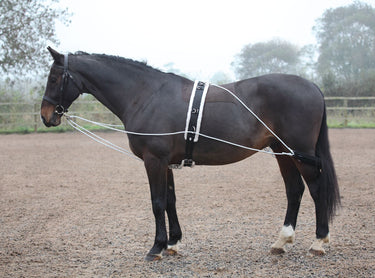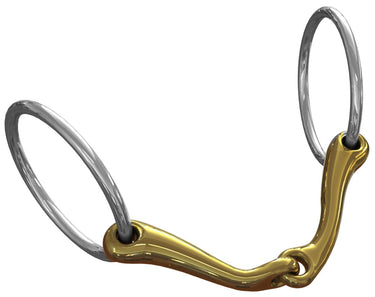Lunging and groundwork can play a valuable role in your horse’s training – helping to build balance, focus, and strength from the ground. Knowing when to use training aids and having the right equipment ensures each session is both safe and effective.
What Is Equine Lunging?
Lunging involves working your horse in a large circle from the ground, using a long lunge line and either a cavesson or bridle. It’s a useful way to exercise your horse without riding, helping to improve rhythm, build muscle, and teach voice commands.
It’s particularly useful for:
-
Warming up before riding
-
Training young or green horses
-
Managing horses during rehab or reduced workloads
-
Helping sharp horses settle before schooling
Groundwork with Purpose: Why It Matters
Groundwork isn’t just for the inexperienced – it benefits horses of all levels. It allows you to see your horse’s natural movement from the ground, helping identify stiffness or imbalance. Done consistently, it improves:
-
Suppleness through the back
-
Attention to voice cues
-
Forward energy and engagement
-
Rider-horse communication
For more advanced work, long reining is an excellent next step. It teaches your horse to respond to rein aids from the ground and it’s especially useful for teaching young horses the basics before they’re ridden for the first time.
Essential Lunging Equipment
Having the right gear makes lunging safer and more productive. The basic lunge equipment for horses typically includes:
-
A padded lunging cavesson or bridle
-
A 5–10 metre lunge line
-
Gloves and a lunging whip
-
A roller or surcingle
-
Optional aids like side reins, bungees, or Pessoa systems
Explore our full range of lunging equipment to find everything from basic kits to professional-grade training tools.
Training Aids: Helpful or Harmful?
Used correctly, horse training aids can support your horse’s balance and outline by encouraging them to work long and low or into a more connected frame. However, they should never force a position. The goal is always to guide your horse to carry themselves better – not to “tie their head in”.
Common lunging aids include:
-
Elasticated side reins
-
Bungee ropes
-
Pessoa systems
-
De Gogue or Chambon styles for specific correction
Take time to introduce these slowly, with plenty of reward and clear voice aids. You can browse our selection of training aids to find the best fit for your setup and goals.
Introducing Long Reining
Long reining gives you more steering and control than lunging and allows for more advanced movements, such as lateral work and transitions. It’s also a fantastic exercise for developing strength and obedience before ridden training.
If you’re considering long reining, make sure to invest in:
-
Soft, even long reins (not stiff lunge lines)
-
A well-padded roller or surcingle
-
A stable, correctly fitted bit and bridle
When lunging or long reining, it’s best to use a mild, simple bit that offers clear communication without causing discomfort. Loose ring snaffles, eggbutt snaffles, or rubber bits are popular choices for groundwork, as they allow for gentle contact and clear rein aids. Bits with strong leverage, like pelhams or gags, should be avoided when lunging – these can apply excessive pressure and may confuse or upset the horse when used from the ground. Always ensure the bit fits correctly and suits your horse’s level of training. You can browse our full selection of horse bits to find a suitable option for groundwork and in-hand work.
Final Tips for Safe and Effective Groundwork
-
Always start with short sessions – 10 to 20 minutes is ideal for most horses.
-
Keep the circle large to protect joints and encourage correct movement.
-
Use voice commands consistently and reward promptly.
-
Introduce training aids slowly and never rely on them as a shortcut.
Regular groundwork, especially lunging and long reining, can help improve your horse’s way of going, strengthen your bond, and create a more focused, balanced partner under saddle.
If you’re looking to build or update your groundwork kit, explore our full collection of horse training and lunging equipment. With the right tools and approach, groundwork can be one of the most rewarding parts of your horse’s routine.




